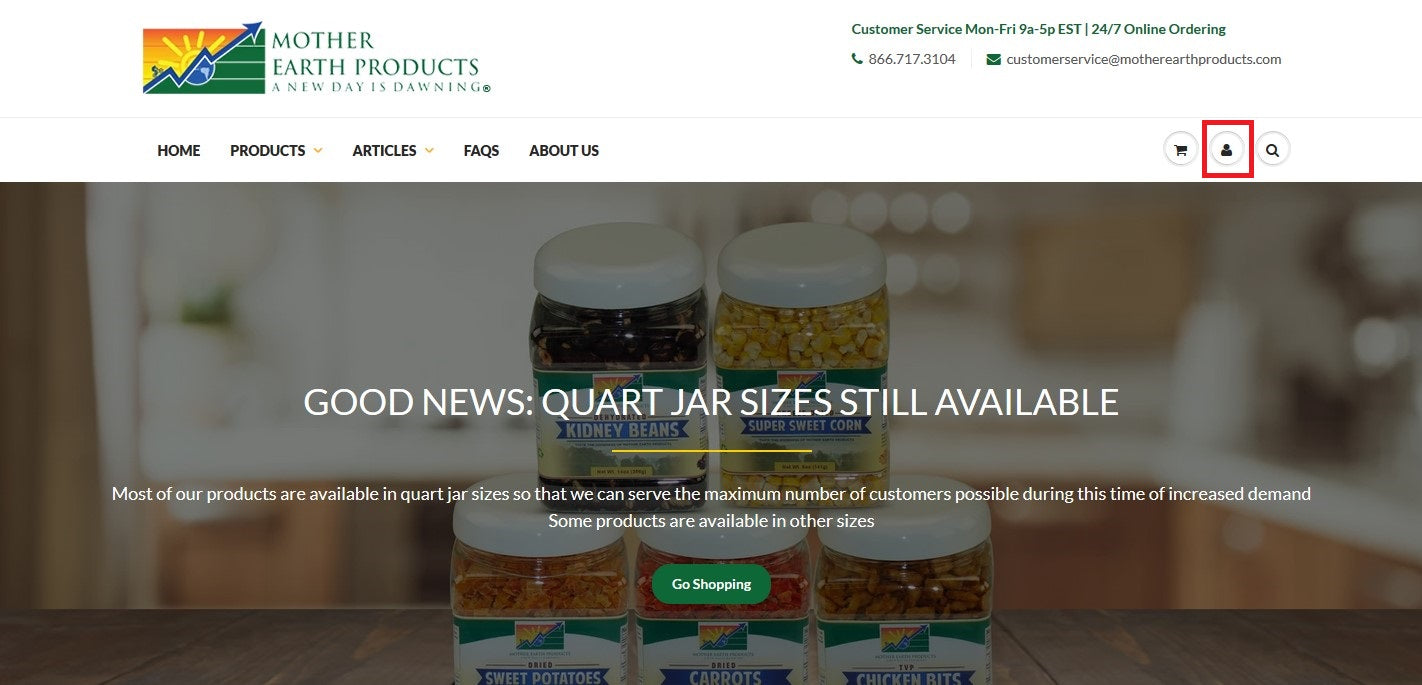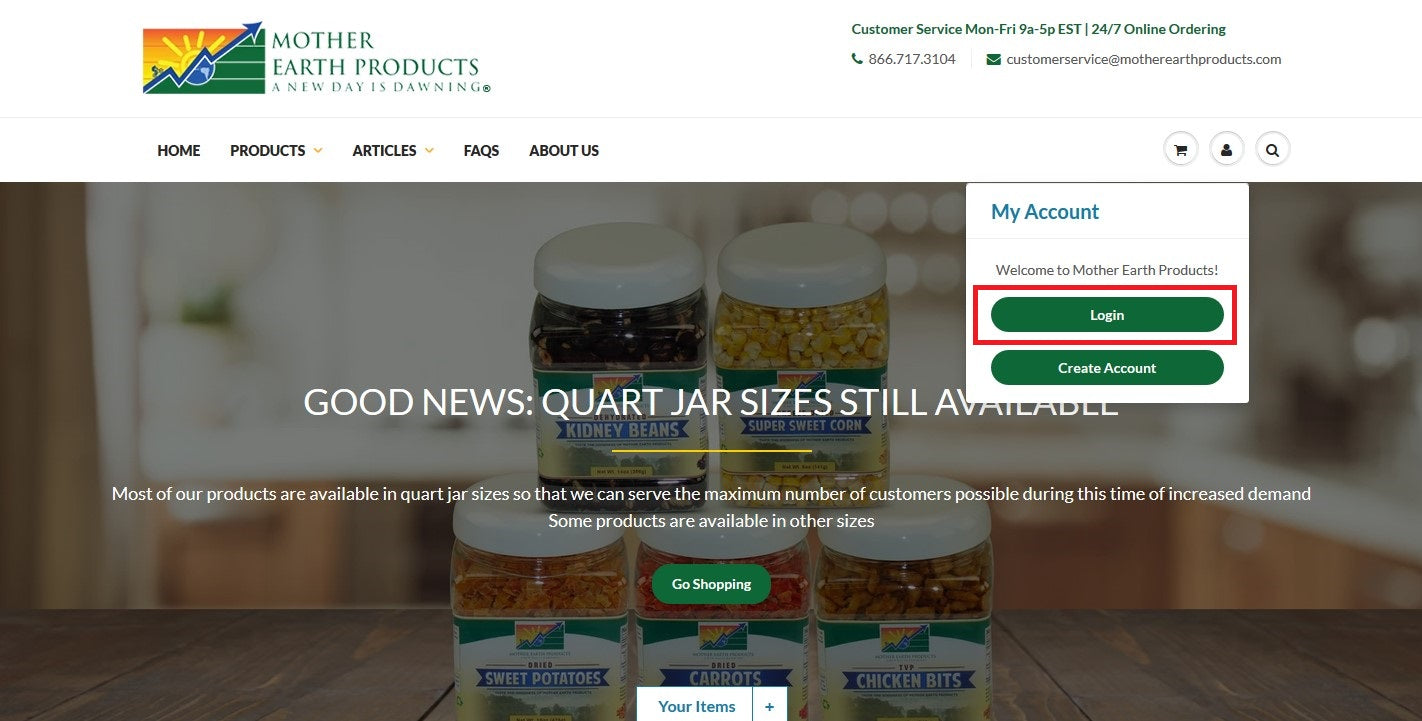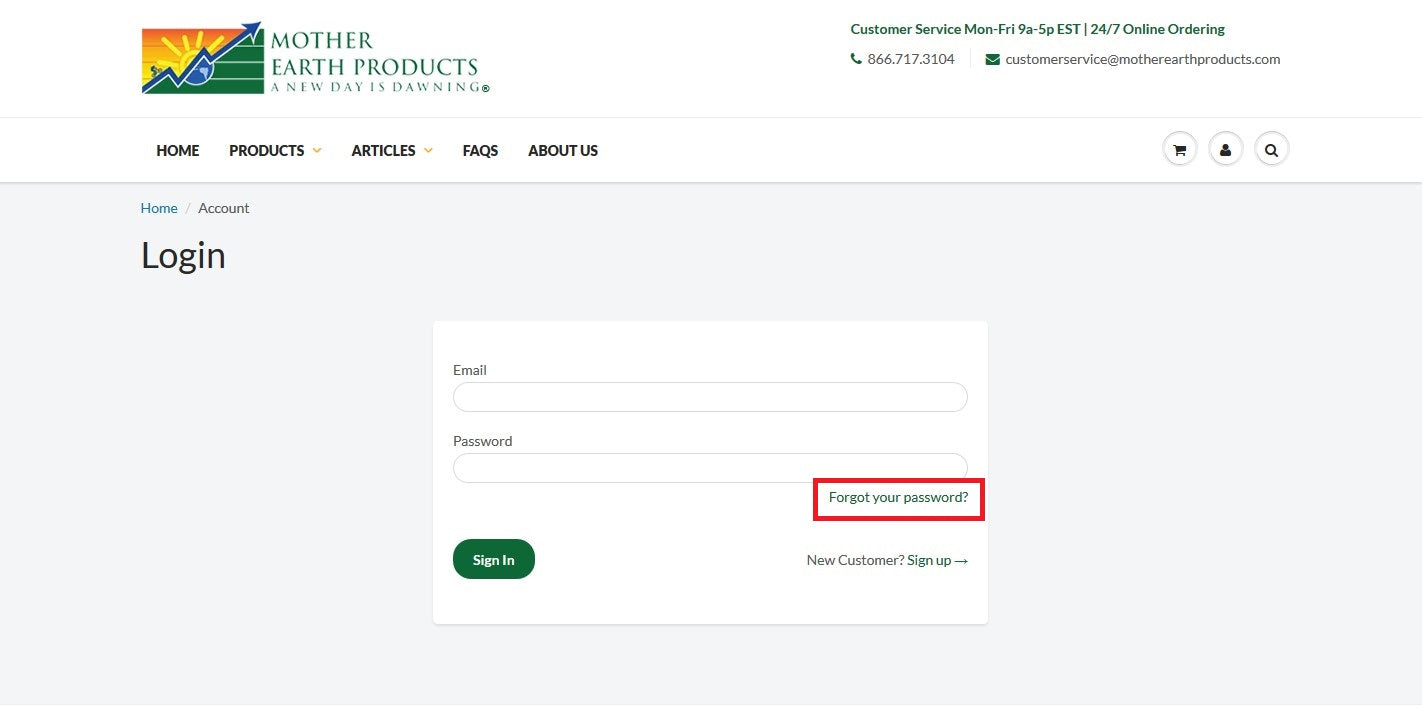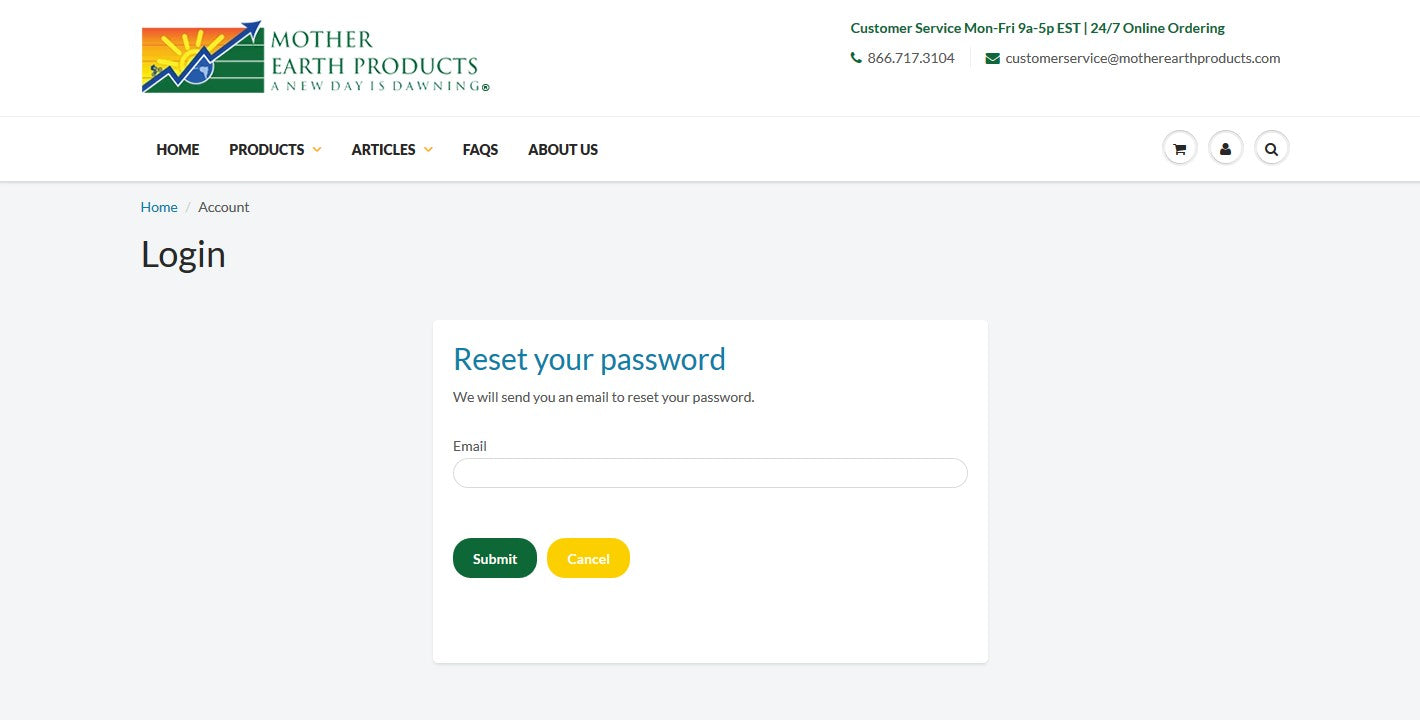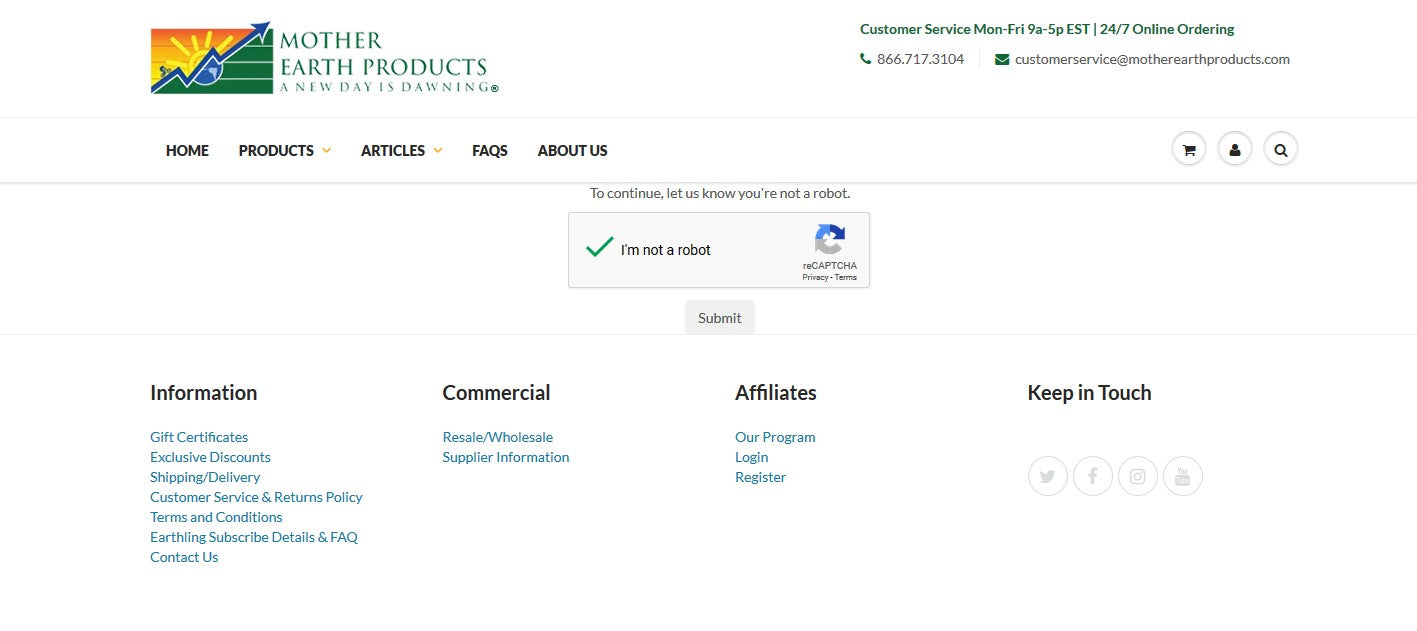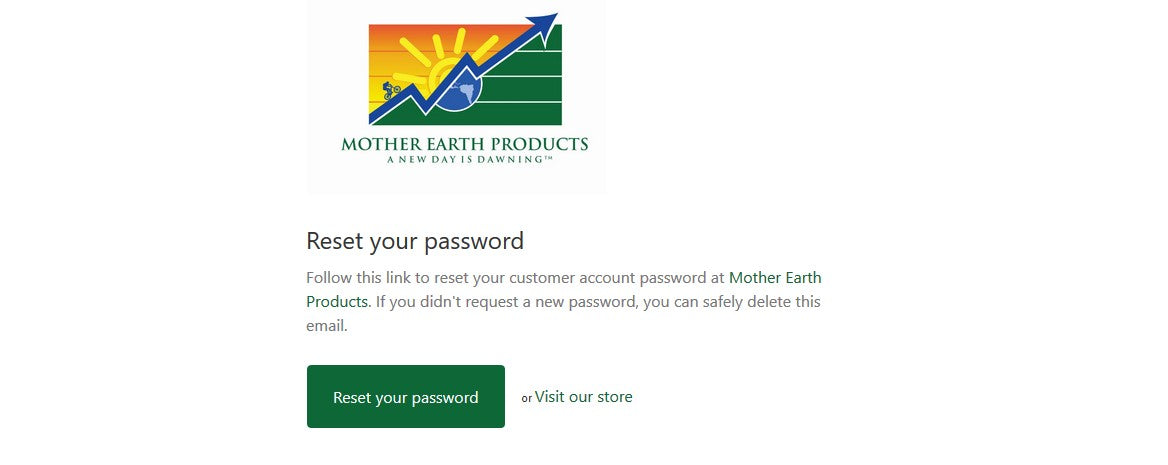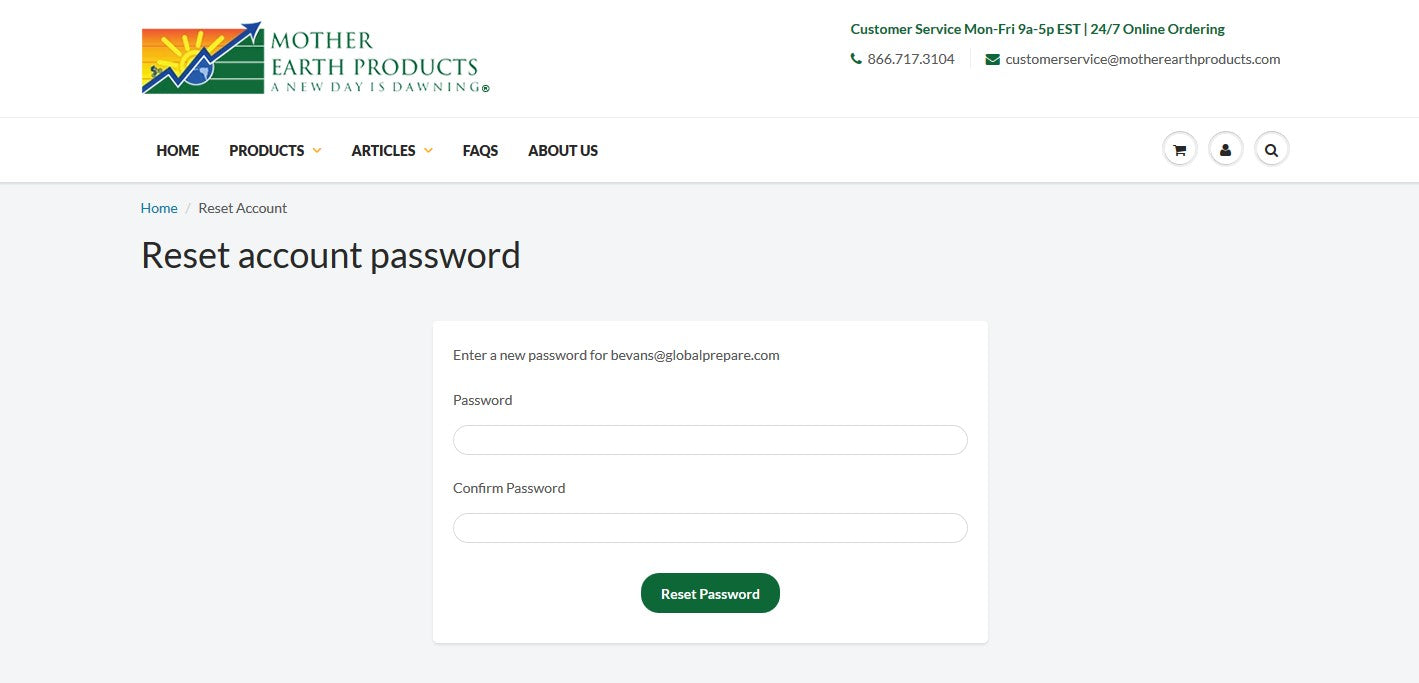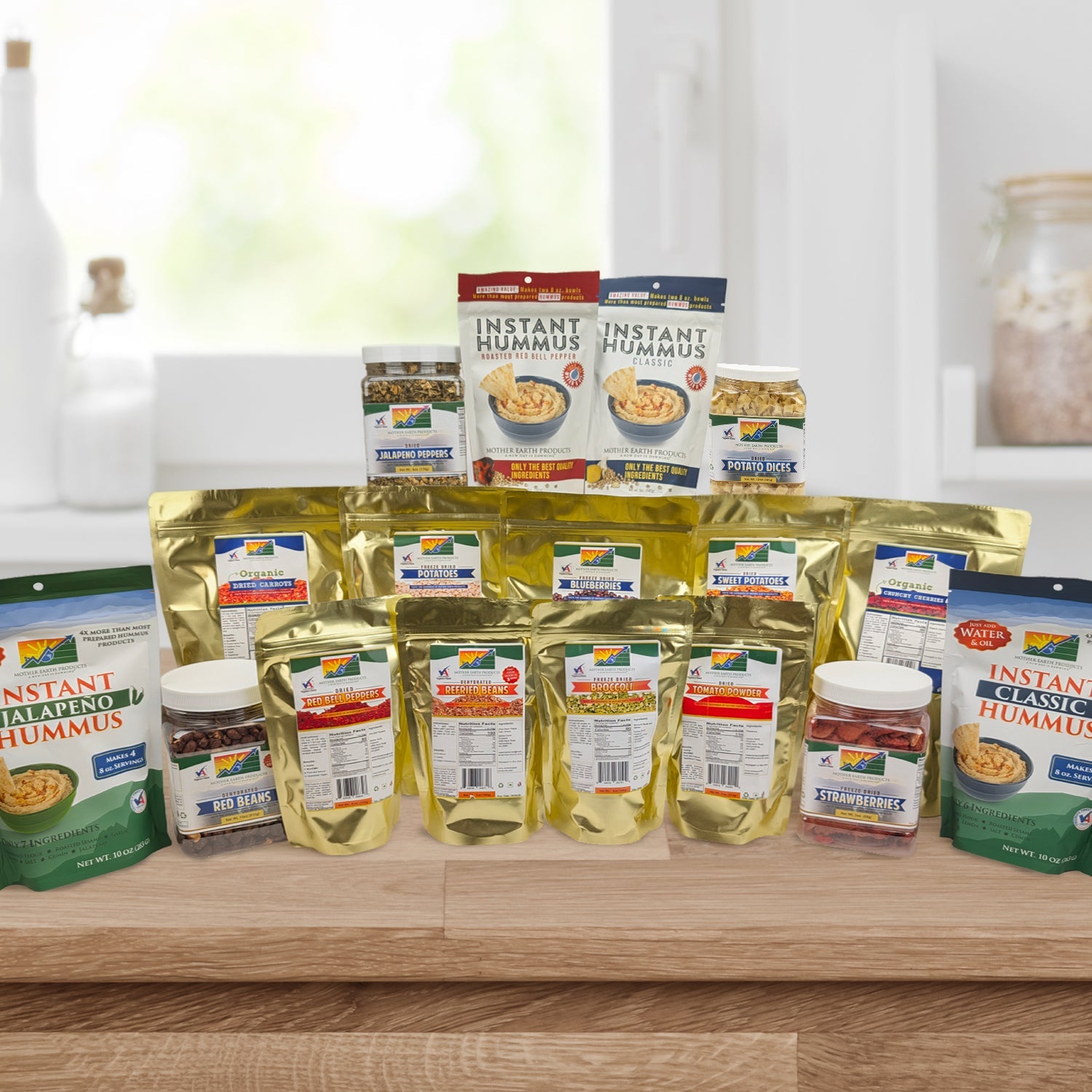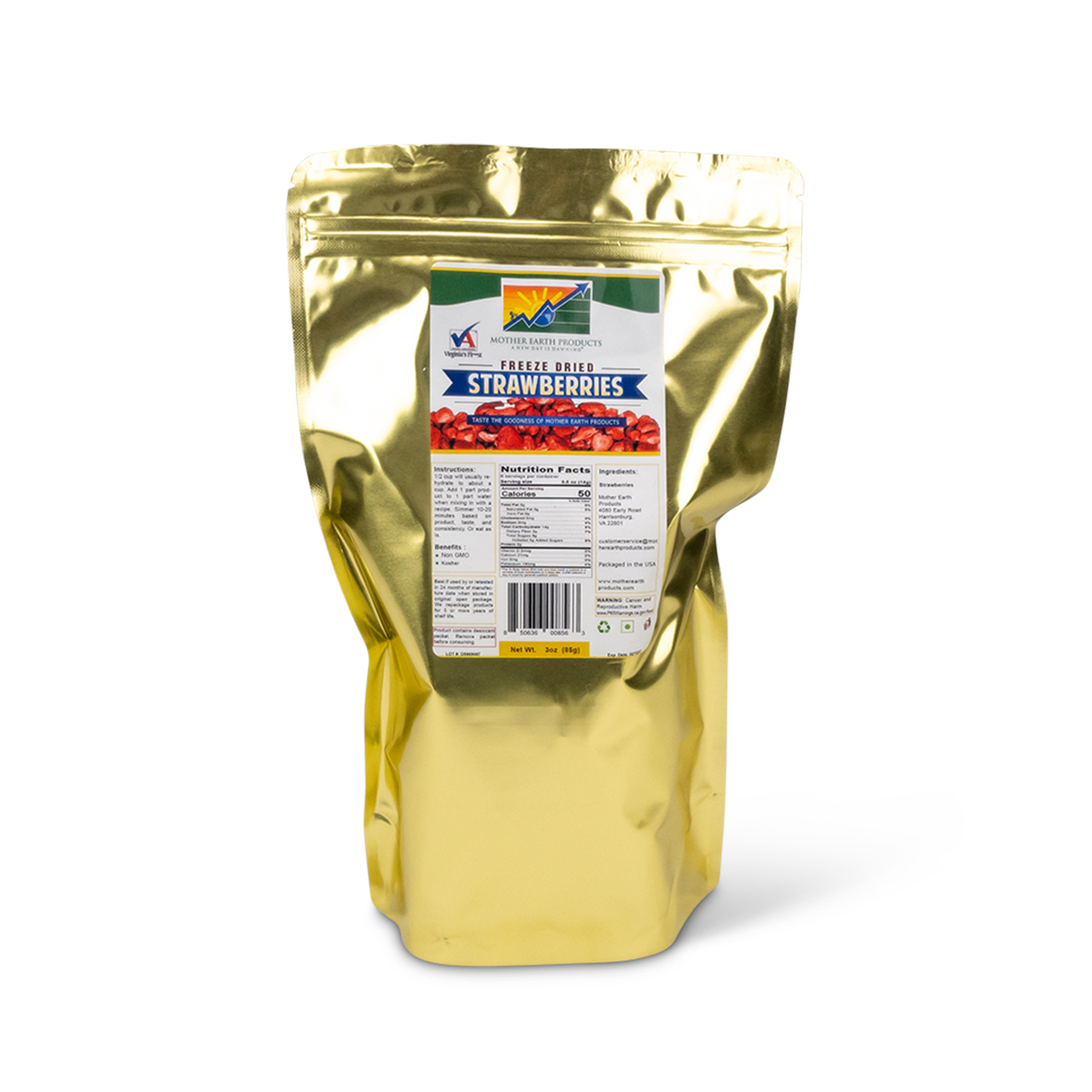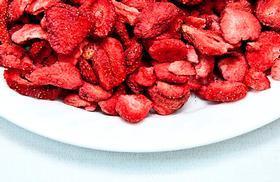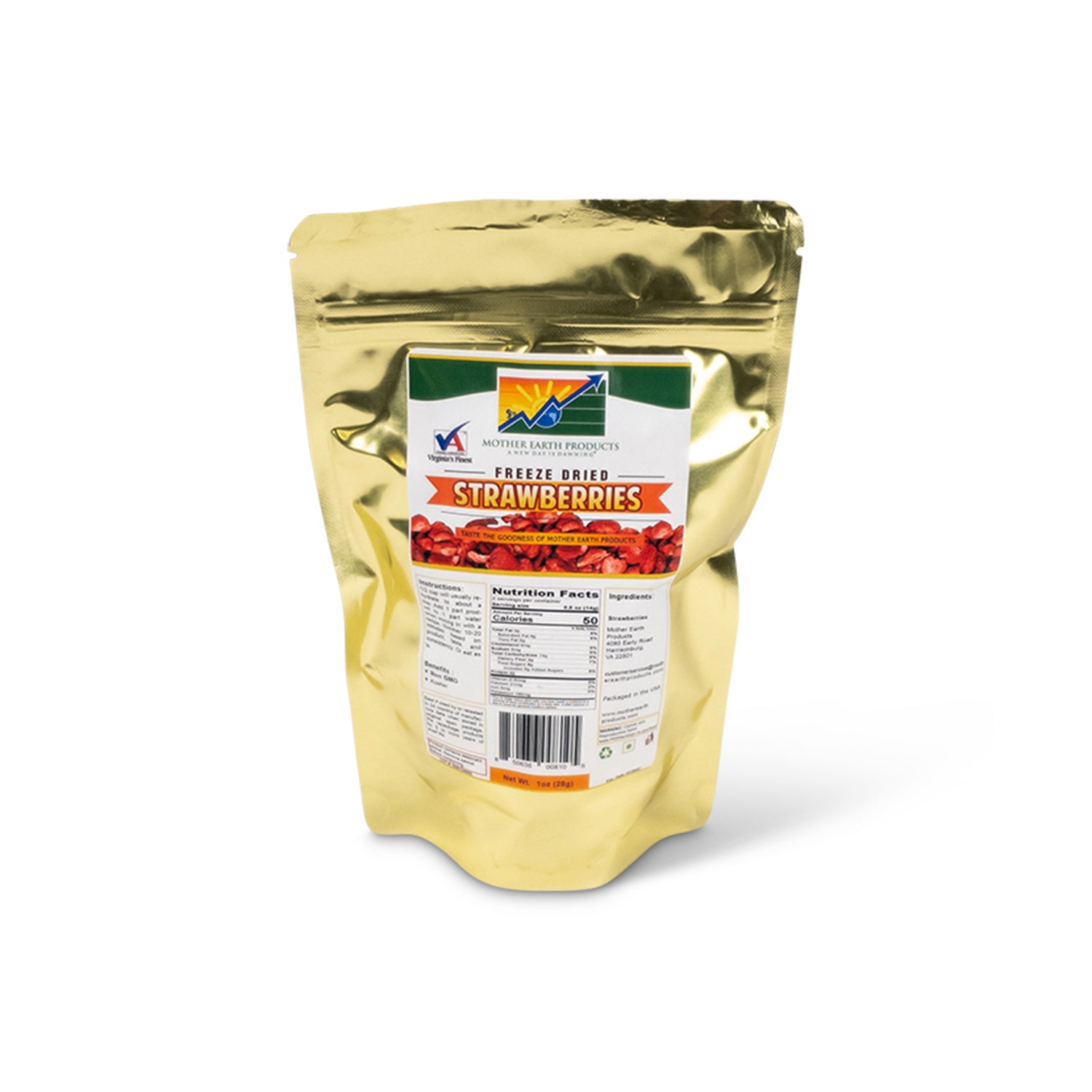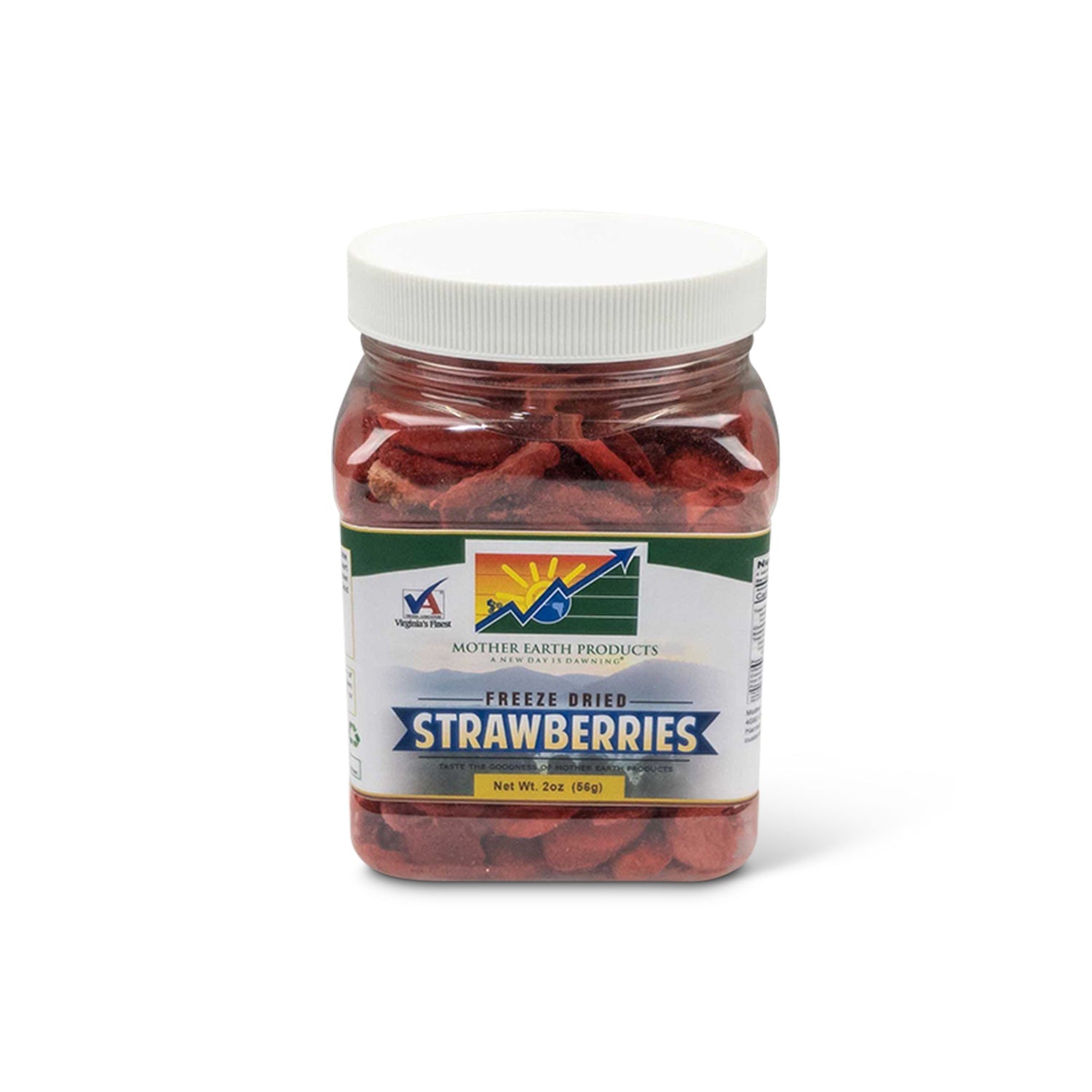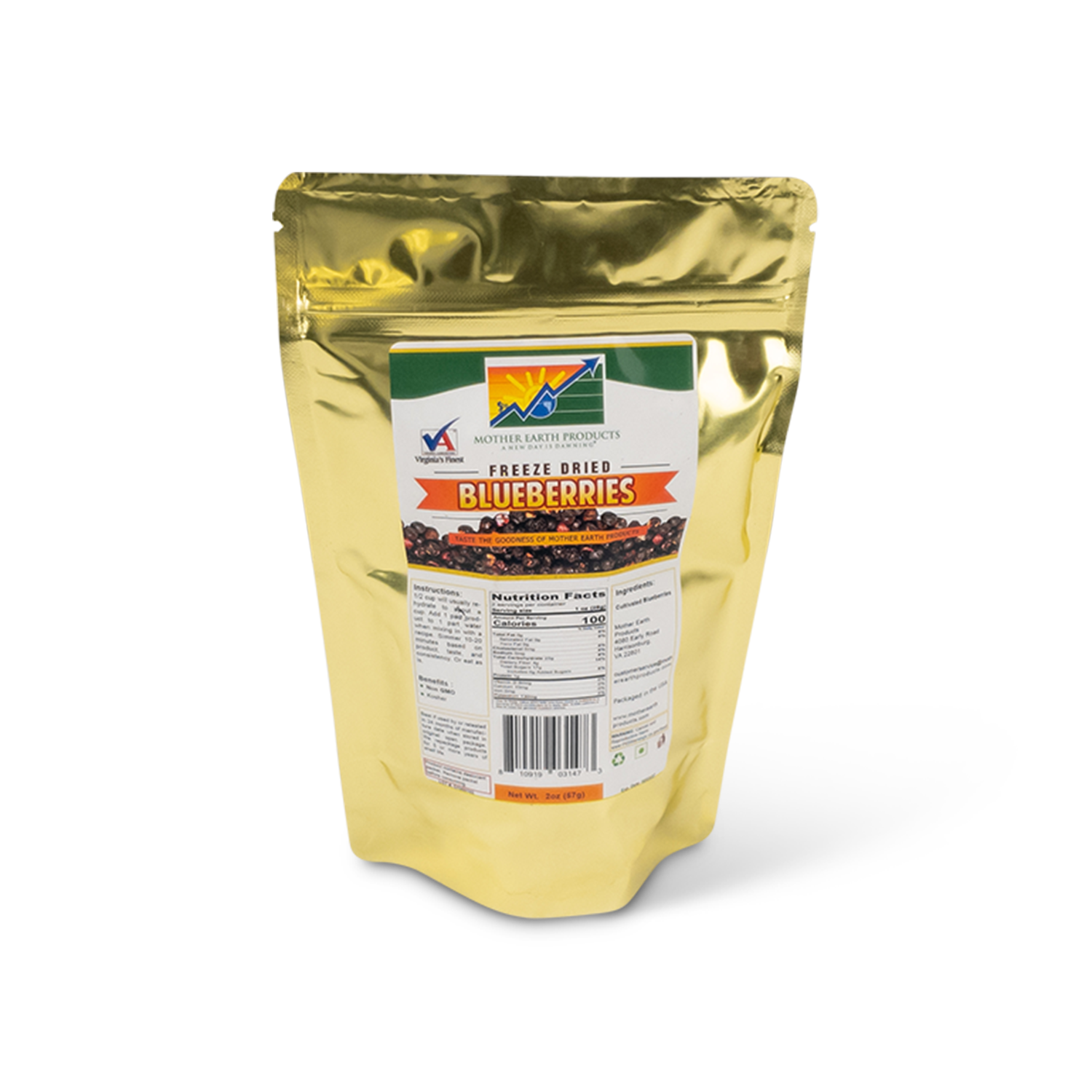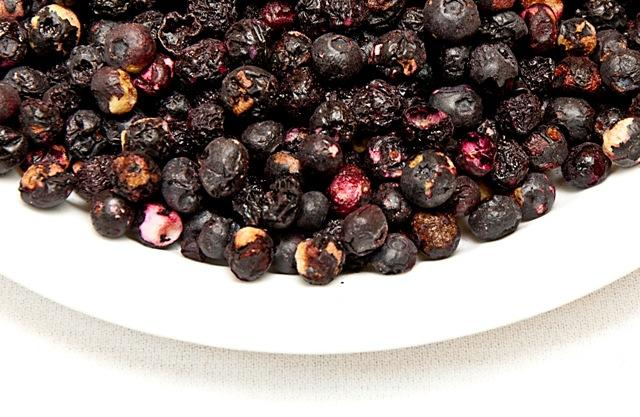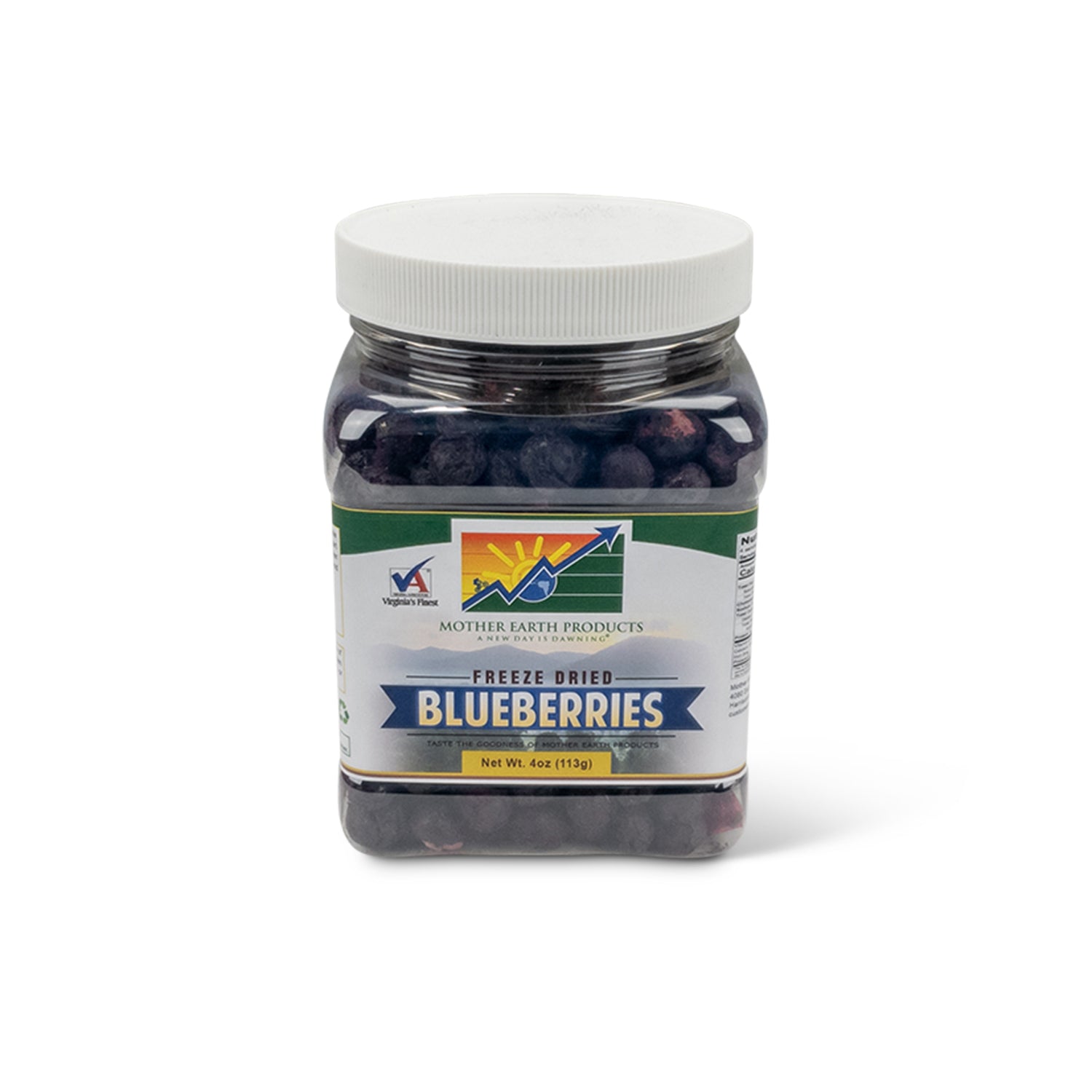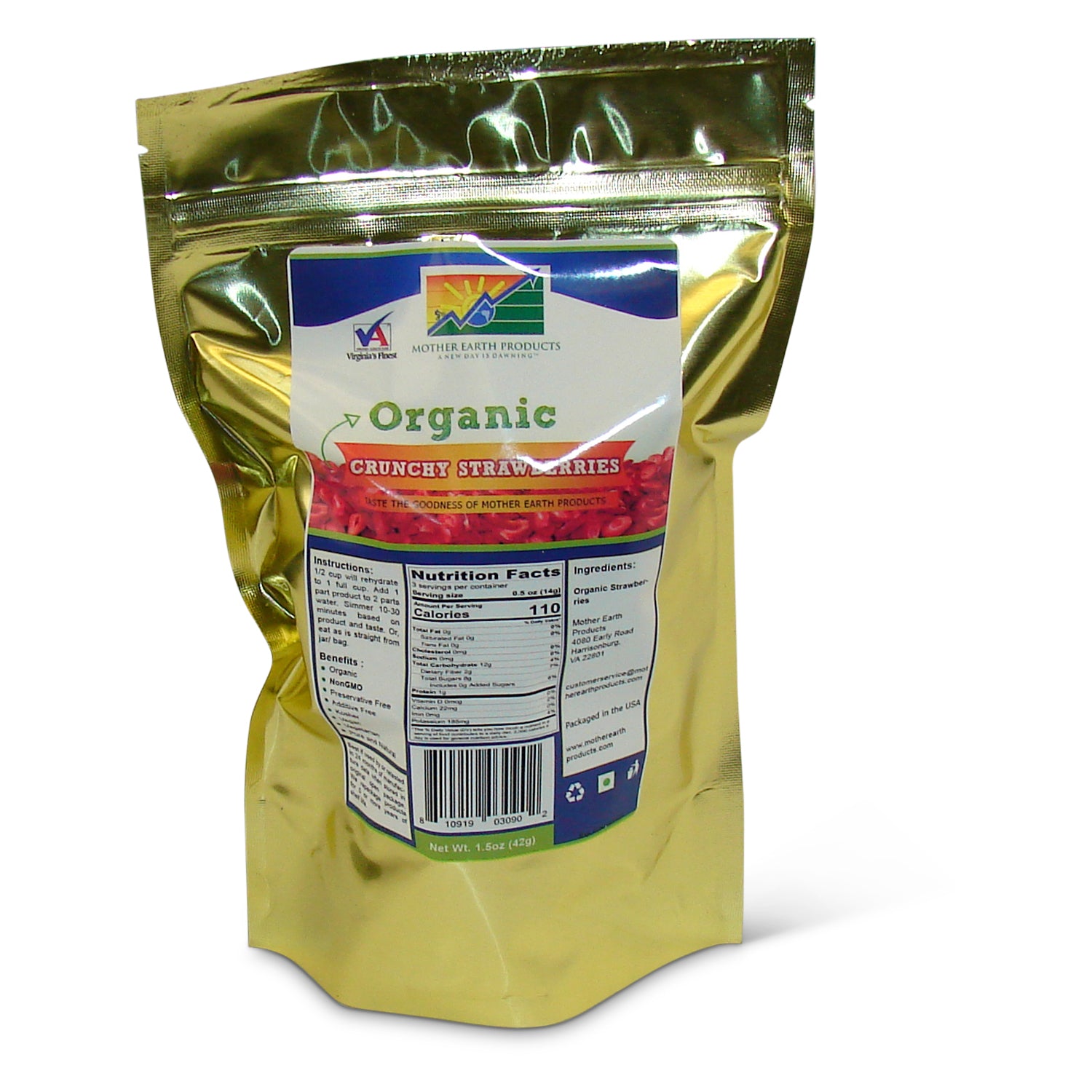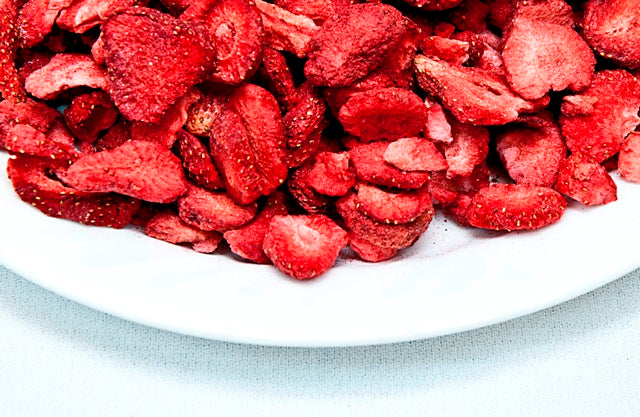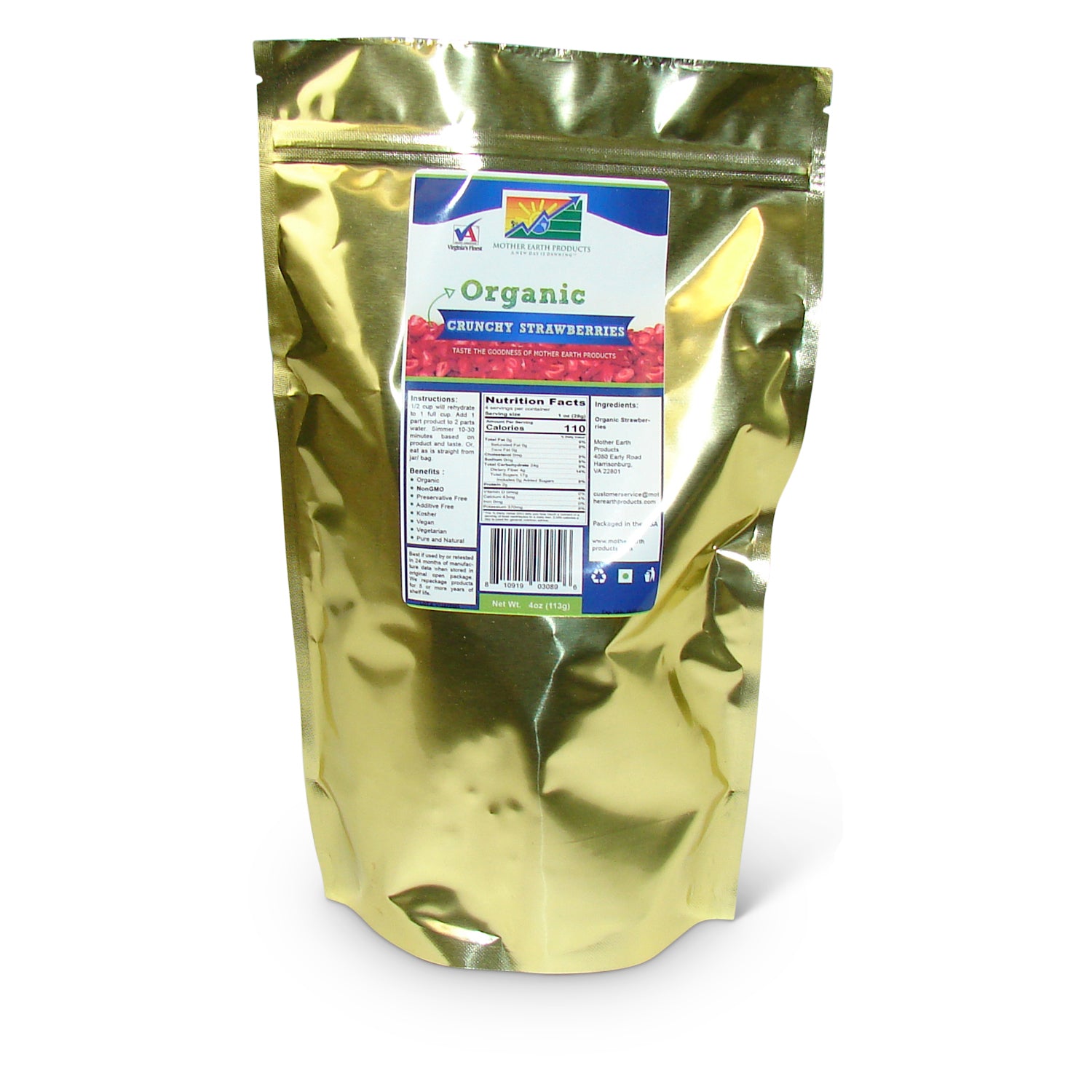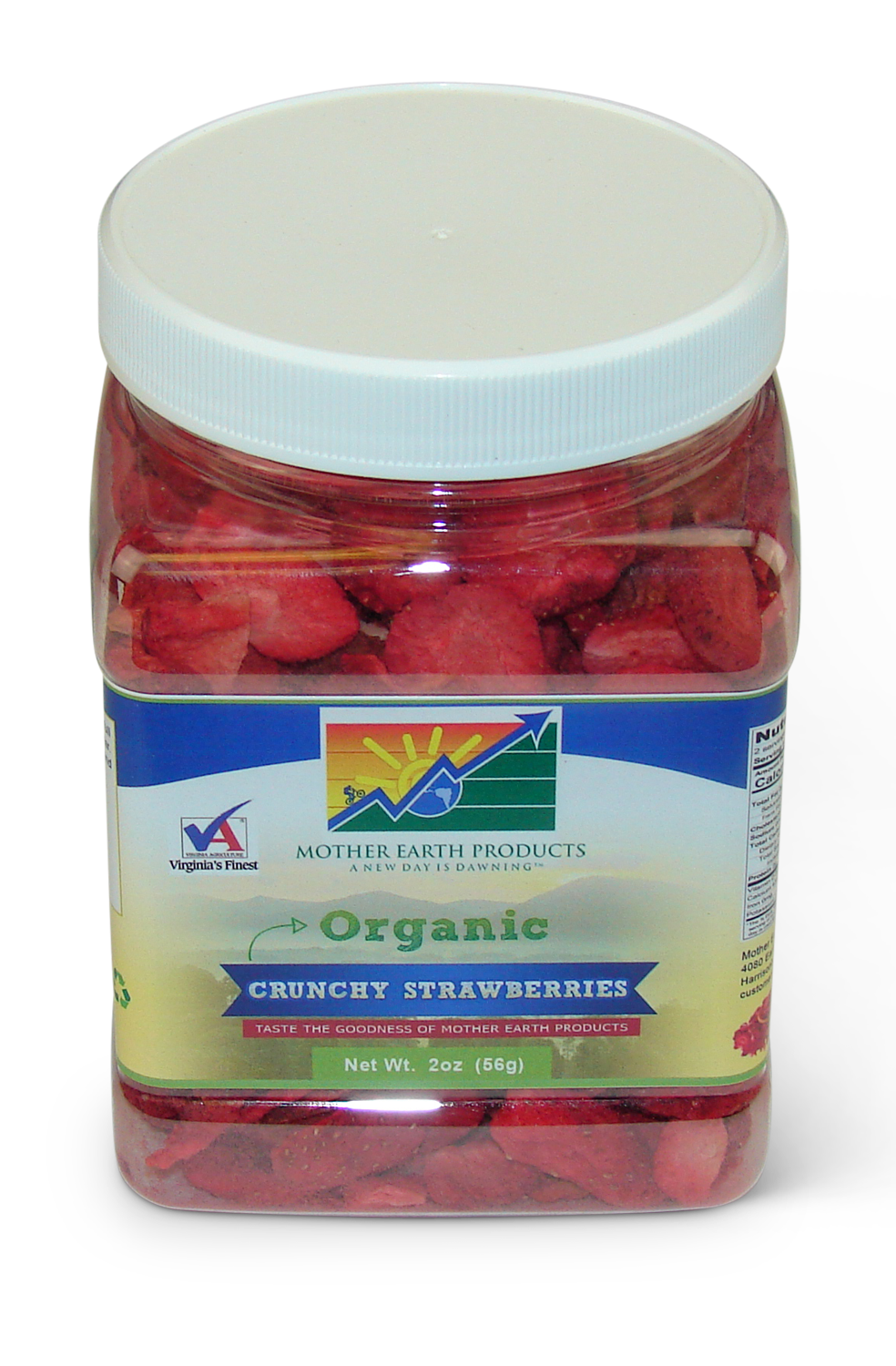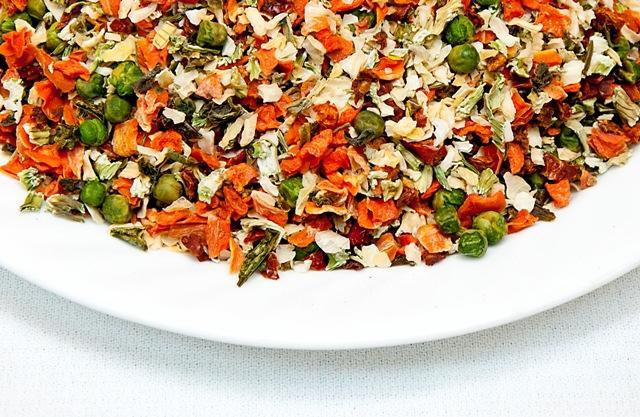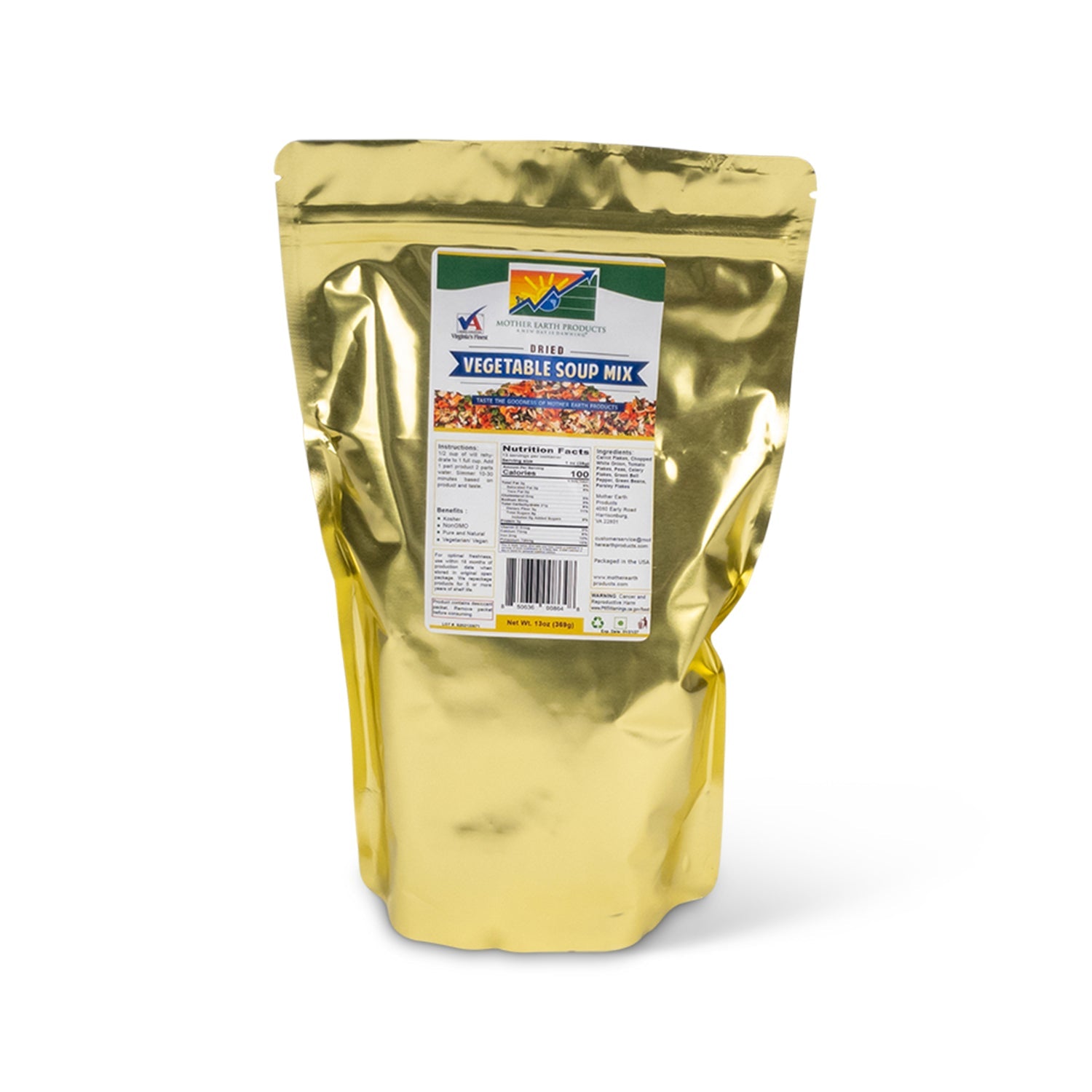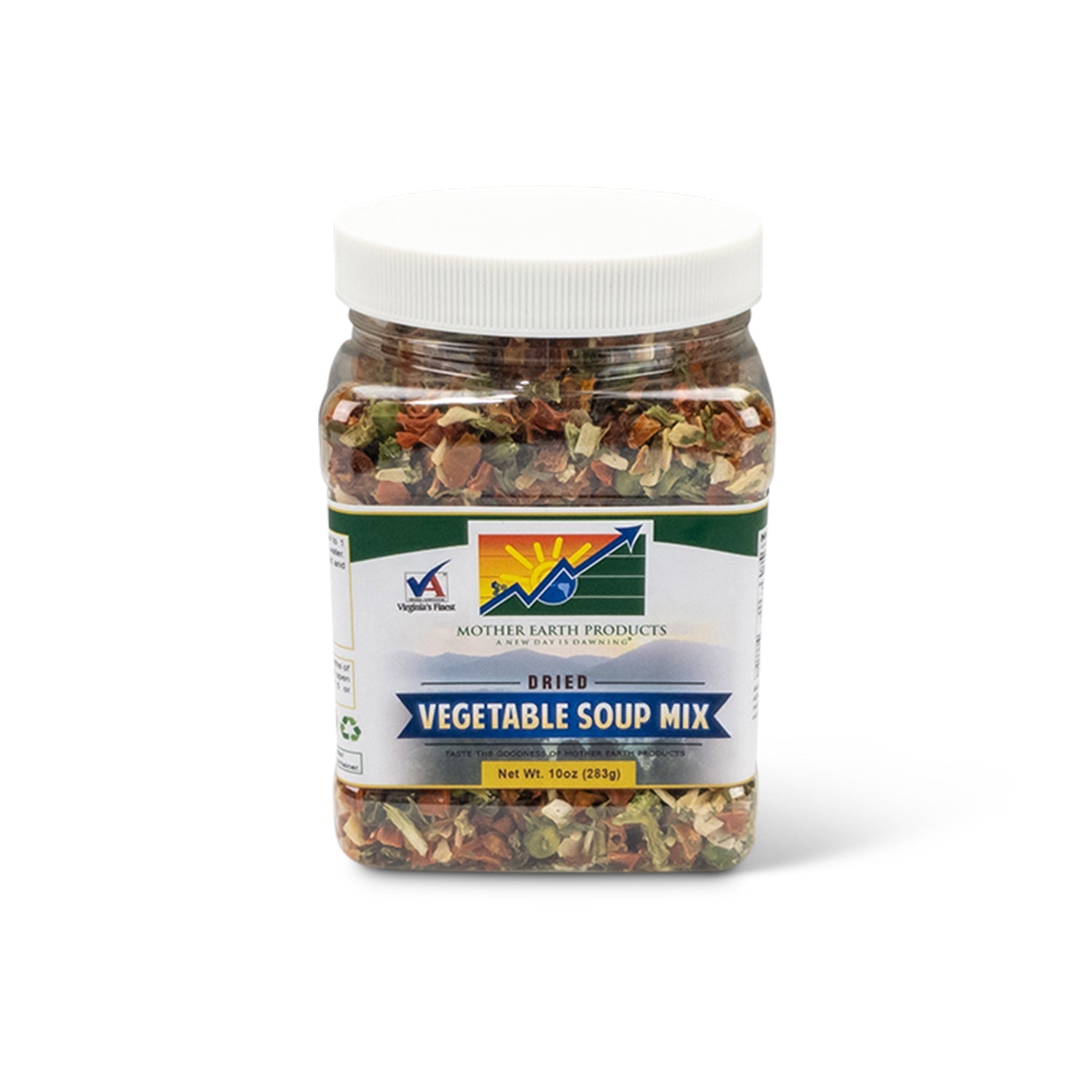After initially creating an account, you will receive an email from us with the subject line “Customer account activation”. Within this email there is an ‘Activate your account’ button.

Clicking that button authenticates your account creation and allows you to log in with the email and password you initially registered with. If you did not get this email yet, let us know, and we can resend it to you so you can set up your account. Welcome to Mother Earth Products!
Firstly, it is never our intent for you to receive anything damaged, defective, or wrong; however, we do send large shipments of product to our retailers at Amazon and Walmart.com. They receive our products into their fulfillment centers and distribution centers all around the country. They then put our products into their inventory/ on their shelves to sell to you when your order from them online. They also take the responsibility of pulling the products from their shelves and shipping it directly to you. If you received something you did not order, something that is damaged, or something that is defective, you need to go directly back to the online retailer you purchased it from and either return the product for a refund or a replacement. They take the responsibility of handling all facets of your order, and we do not have control over how they store it or ship it to you. We cannot replace or refund you anything you purchase from Amazon or Walmart.com since they are the ones who processed your purchase and monies and shipped it to you.
We do offer products on our site that Amazon.com and Walmart.com do not have, and we would love to have your direct business if the service from Amazon.com and Walmart.com are unsatisfactory to you.
OUR PACKAGING OPTIONS GIVES YOU THE LOWEST PRICES AND THE FRESHEST PRODUCTS
We want you to always find the best value in one of the choices we offer. When you choose Dried Vegetables, Dehydrated Vegetables, Freeze Dried Fruits, Freeze Dried Vegetables, or any other Food Storage products from Mother Earth Products, you can be assured that we will provide it to you in the safest, most preservable condition possible.
- Small Sample Pouches: to test many products. We are not producing samples at this time.
- 2 Cup Pouches: for those that never use that much product. These are good for longer term storage options, too, or those who store their spices in their cabinets for cooking
- 2 Cup Jars: for those that don't use that much product and enjoy seeing the product. These jars cannot seal and keep light out (like Mylar bags). These are only available for limited products.
- Quart Size Jar: for those that enjoy seeing the product. These jars cannot seal and keep oxygen and light out (like the Mylar bags).
- Quart Mylar Pouch: the very best packaging for freshness as they are sealed from the light and oxygen - sealed with moisture absorbent packs, and will be good on your shelves for many years unopened, or up to 5 years after opening. They have a zip top to reseal after each use.
- Multi-Pound Bulk bags: For those that use a lot of product or wish to repackage for themselves. This is packaged for you in a bulk plastic or mylar bag. Most of the time, unless requested otherwise, we put oxygen absorbers into each bulk bag.
We offer you a variety of packaging options that not only can save you money, more importantly it preserves your product in the best possible way. All our packaging is FDA approved for food storage and handling.
Let’s start with what comes standard with most of our products:
- In each of our standards: in our mylar bags, we place desiccants, or moisture absorbers. These are non-toxic packages specifically designed to gather large amounts of any excess moisture that might infiltrate your product as you open and use it. Since many of our customers live in humid climates, this is critical. Do not remove this packet. Leave it in the packaging until you have finished the product.
- Two variables, out of the control of the manufacturer regardless of containers used and proper packaging procedures, are light and temperature. This is in the hands of those who store the product long term, or even just in their cabinets or pantries (for inclement weather).
- Air infiltration in your product is one of the biggest causes of your product degrading too rapidly. It is critical that packaging is properly sealed and kept that way. We do take all of this into consideration when we package the product; so, please abide by each date on the food product label. The food will last longer than the date on the label if kept well.
- Moisture infiltration in your product is another one of the biggest causes of your product degrading too rapidly. Here at Mother Earth Products, we understand that moisture is obviously one of the greatest enemies for Dried Vegetables, Freeze Dried Fruits, Freeze Dried Vegetables, Instant Beans, or any other Food Storage product.
- Products should be stored in a cool, dark place. The optimum condition would be 65 degrees or less.
Mother Earth Products can’t make any specific warranties in relation to the life of the products, because those two variables are dependent on you. We can only pass on the proper techniques and industry standard recommendations.
We receive these questions frequently:
- Are there chemicals, additives, or preservatives in your products?
- Are they gluten free?
- Do they contain, or come in contact with any other high allergy items: yeast, eggs, nuts, dairy, etc.?
We understand that the answers to some of these questions are critical to the health and safety of your families. As such: we do not perform any initial processing/ manufacturing of these products. We purchase these products from their original manufacturers and repackage them as Mother Earth Products. We can, however, do some research for you into the allergen statements from our suppliers to give you that information.
Generally speaking, our dried and freeze dried manufacturers do not have peanuts, tree nuts, or shellfish in the products, not on the same line, and not in the manufacturing plant or warehouse. We can give specifics, as well, on eggs, dairy, milk, wheat, fish, and soy.
If any of our items are single items – dried vegetables, freeze dried fruits, dried instant beans, etc. – they have no additives or preservatives of any kind. You can rest assured that all are just healthy, natural, and delicious fruits and vegetables. This is one of the main reasons these products work so well for healthy snacks, because unpolluted ingredients are our favorite dishes. If the products do have extra ingredients, we do declare those ingredients in the Ingredients tab that is present on every product page.
If any of our items are a combination of different ingredients – soups – the ingredients are listed on each product page - Ingredients tab. You will be able to determine, then, what personal conflicts you may have with them.
Our facility does package almost every item we carry, but we do not repackage foods with nuts, eggs, soy, gluten, or dairy. We endeavor to be as careful as possible, because three of our owners have intolerances to dairy and gluten.
If you have any questions or concerns, please email us through the Contact Us section of the website.
There are "General Guides" to preparing our products. Each product label will give you rehydration instructions, and we have a variety of recipes on our Blog. If you have any questions, feel free to contact us!
General Guidelines for rehydrating Dehydrated Products
- 1/2 cup of Dried Product will usually rehydrate to one full cup.
- Add 1 part product to 2 parts water, when mixing in with a recipe (if you wish to cook these as a side dish, you might want to change the amount of water for each 1 part of dry product).
- Simmer 10-30 minutes based on the product and taste.
- Check liquids for the final consistency.
General Guidelines for rehydrating Freeze Dried Products
- 1/2 cup of Dried Product will usually rehydrate to less than one full cup.
- Add 1 part product to 1 part water when mixing in with a recipe (If you wish to cook these as a side dish, you might want to change the amount water for each 1 part of dry product).
- Simmer 10-20 minutes based on the product and taste.
- Check liquids for the final consistency.
- OR you can eat these freeze dried fruits and vegetables right out of the jar or mylar bag for a crunchy, satisfying snack.
General Preparation Guide for Pre-Cooked Instant Dehydrated Beans
- Add 1 part Dried Instant Beans to 4 parts water
- Cover and simmer for 3-30 minutes - depending on individual bean instructions.



